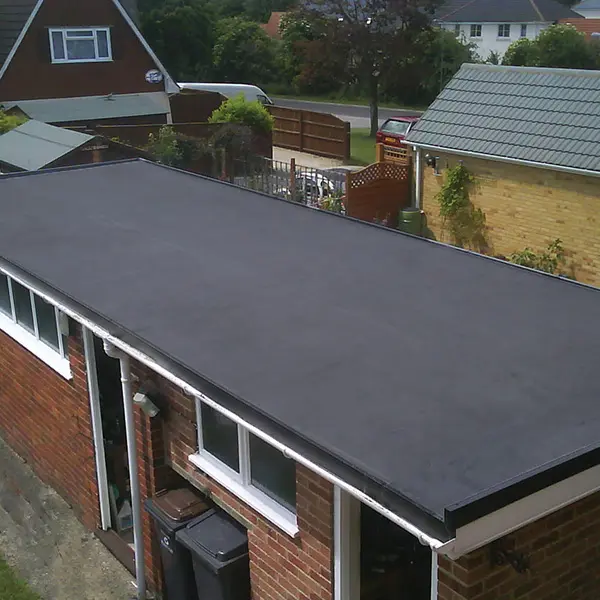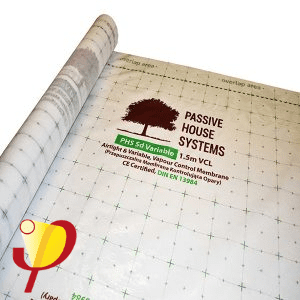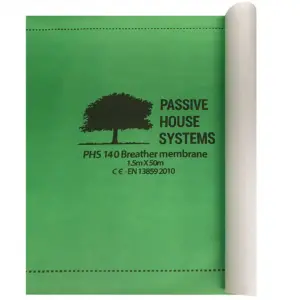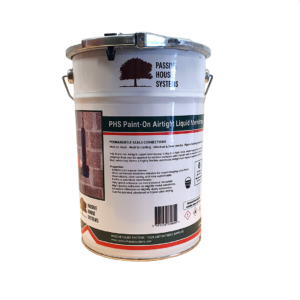Passive House FAQ
What are roof membranes made out of?
The most popular materials for roof membranes are thermoplastics, modified bitumen, and synthetic rubber. The membrane’s composition and quality determine its characteristics, including heat absorption, watertightness, and vapor control.
Where are roof membranes used?
Rubber membrane roofs are often used in commercial buildings as they are easy to install and long lasting. Internal membrane roofs are most commonly used in residential buildings and passive houses in order to control moisture and airtightness.

What is EPDM membrane roofing?
EPDM roofing is a black membrane made of synthetic rubber that forms a watertight seal and controls ambient temperature. Because of its low price and extreme durability, EPDM is commonly used in commercial constructions, with a properly installed roof lasting anywhere from 25 to 30 years.

What are membrane roofs?
Roofing systems that incorporate roofing membranes into their construction are known as membrane roofs. They’re waterproof, airtight and stop heat from entering the building.
What’s the SD value of membranes?
Whether or not a membrane can allow water vapour to pass through it is measured by its SD value. Vapour can easily pass through a material with a low SD, like a membrane, while it has a hard time passing through a material with a high SD, like glass. Because of its high SD, water condenses on windows. Understanding a material’s SD value allows us to prevent moisture accumulation, which can lead to structural damage.

What’s a SD value?
A medium’s Sd value indicates how much more difficult it is for water molecules to diffuse across it compared to a standard air column of one meter. Metres are generally used as the standard measurement. Vapour can pass through a material with a low SD, like a membrane, while it has a hard time passing through a material with a high SD, like glass.
What is a passive house ?
The concept of the Passive House is based on the idea that “eco-friendly, low-energy buildings can also be extremely comfortable”. An airtight passive house relies on the body heat of its inhabitants and the waste heat from appliances like stoves, ovens, and lights to provide thermal comfort. The structure stores this heat and stops it from escaping, while also keeping out summer heat. This type of home can reduce heating and cooling costs by as much as 90%.
Does a passive house need heating?
A passive house does not require heating in the traditional way. Only a small portion of the heat in the house is intended to leave, keeping the dwelling almost perpetually cozy and warm. There are various low energy methods used to heat and cool passive houses. Passive heat sources can be the sun, human occupants, appliances.
Will a passive house save you money in the UK?
Yes. Passive houses can be slightly more expensive than conventional homes in the United Kingdom due to the high standards for insulation, airtightness, strong seals, and performance; yet, a passive home owner will spend 90% less on heating and cooling than a typical home and 75% less than low-energy homes. Energy price increases have significantly less of an impact on passive home owners.
How expensive are passive houses in the UK?
Surprisingly, the cost of building a Passive House in the UK is pretty similar to that of a conventional home. The cost to construct a passive house is 10% higher in Ireland, 9% in the UK and 8% in Germany. Which considering the savings is a great deal. Many countries offer grants for passive houses which combined with the massive energy savings makes them cheaper in the long term. In the UK energy companies offer insulation grants : Help from your energy supplier.
Does insulation save money?
Yes! Unfortunately, some British homes are poorly insulated and waste a large portion of their heated air. Better insulation in the building’s walls, roof, and attic means less heat is lost and, consequently, lower heating costs over the building’s lifetime. Houses with good insulation and air sealing can reduce heating costs by as much as 90%.
How much does insulation cost?
External wall insulation (EWI) ranges from £152.32 to £169.73 per m2. That’s the price for materials and install. Dry lining is usually around £87 to £100+ for materials and install. Spray insulation can be applied for as little as £30 per m2. Grants from your energy supplier can help you fund retrofit or new insulation installation Help from your energy supplier.

